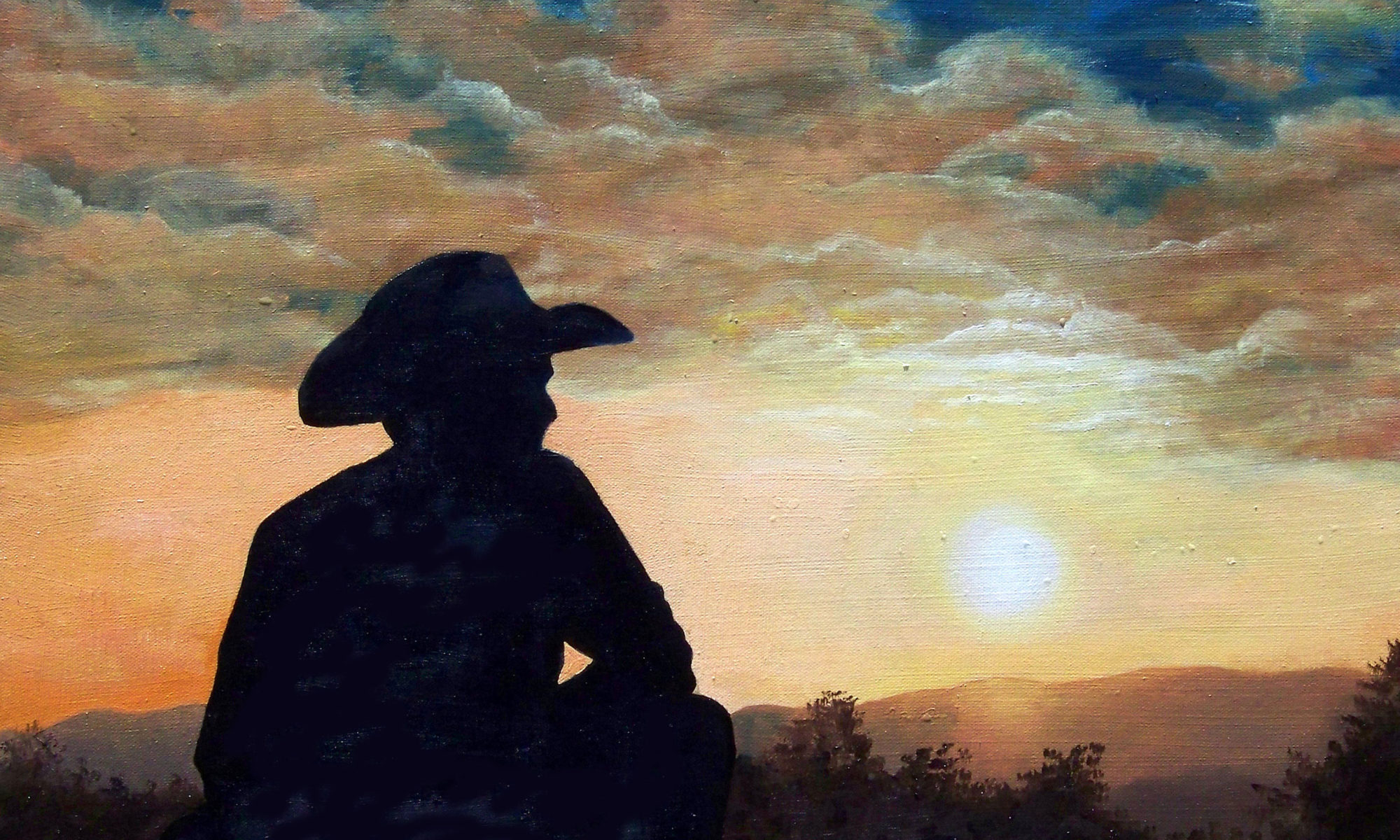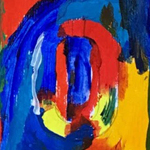
CTAPTYCH | OVERPAINTING
Quick links to more art terms and definitions are located at the end of the list.
Octaptych
An artwork consisting of eight panels or sections where each panel depicts a different but related composition. The panels may then be hinged together or presented side-by-side to make one large image. The term “octaptych” is not a widely used, although it is used in the visual arts community. The term originates from the Greek “octa,” meaning “eight,” and “ptychos,” which translates to “fold” or “layer.” Also see “polyptych.”
Oil Paint
An art medium used by artists since the 1500s. Oil paint is a slow-drying medium made from ground pigment suspended in a natural drying oil, which is usually linseed oil, but can also be walnut or poppyseed oil. It can be applied thick or thin and can be used with glazes. Oil paint’s slow drying makes it easier to blend from dark to light, creating three-dimensional illusions. Its richness and glow make it popular among painters. Clean-up involves using turpentine or mineral spirits.
Oil Painting
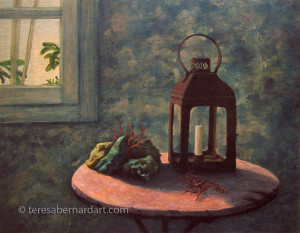
An artistic composition or representation done with oil paints on a canvas surface. Also refers to the art or practice of painting with oil paints. Oil painting artists are often referred to as painters. Some of the most famous oil painters in history include Leonardo da Vinci, Michelangelo Buonarotti, Vincent van Gogh, Johannes Vermeer, and Rembrandt van Rijn.
Oiling Out
A technique where a thin layer of oil is applied to a dried layer of oil paint to make it more flexible and workable. This process allows improved color blending, smoother transitions, and an even surface. It also serves to equalize the sheen of the painting’s surface, enabling the artist to assess the remaining work needed to complete the artwork. Additionally, it enhances the saturation of the colors in an oil painting, rejuvenating it if it has become dull or faded. Once the oiling out process is complete, the artist can either continue painting or allow it to dry.
Old Master
A term that refers to a prominent and highly skilled European artist, especially a famous painter during the period roughly 1300–1830. Also refers to a painting by such an artist.
On-chain Art
Refers to a type of digital art called NFTs (non-fungible tokens) that is created using generative algorithms that are coded and completely stored on a blockchain. This enables the development of one-of-a-kind, verifiable digital artworks, as well as a secure and transparent method of verifying the artwork’s authenticity and tracking its ownership history..
One-point Perspective
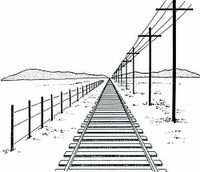
The simplest method of drawing perspective. It uses only a single vanishing point on the horizon line. A vanishing point is where two or more parallel lines converge into each other at “infinity.” A long hallway, railroad track, or road with the viewer positioned face-on and looking down the center is an excellent example of this perspective. As seen in the illustration, the two tracks are parallel to each other, and you know they will remain the same distance apart. However, the further away they get, the closer they appear to be until they eventually disappear at the horizon.
Op Art (Optical Art)
An art movement that originated in the 1960s. It employs optical illusions to engage and mesmerize the viewer. Characterized by its use of bold colors or stark black-and-white contrasts, Op Art features geometric patterns and lines. It often utilizes precise mathematics and abstract shapes to create effects that may give the impression of movement, reveal hidden images, or produce flashing, vibrating patterns, as well as the illusion of swelling or warping. It is distinct from pop art.
Open Composition
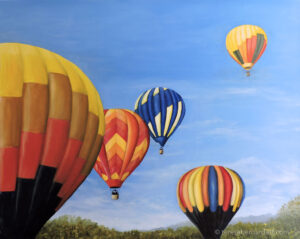
A compositional technique where elements of an image run off the edges and seemingly beyond the boundaries of the canvas, drawing the viewer inside the scene making it easy to imagine what is happening outside of the physical edges of the artwork. Landscapes are prime examples of open compositions.
An open composition is the opposite of “closed composition.”
Optical Mixing
Also known as partitive color, this phenomenon occurs when two or more colors placed near each other create the illusion of new colors. Unlike traditional color mixing, which involves physically mixing pigments to create new colors, partitive color occurs perceptually, between our eyes and our brain. The perceived mixing increases with distance.
Orange

A secondary color that results from the combination of two primary colors, specifically red and yellow. Orange is the complement or opposite of the color blue. The color of carrots, pumpkins, sweet potatoes, oranges, and many other fruits and vegetables.
Origami
The Japanese art of folding paper into shapes that look like birds, animals, etc. The object is to transform a flat square sheet of paper into a finished sculpture through folding and sculpting techniques.
Original (work of art)
The term ‘original’ often denotes exclusivity or uniqueness, suggesting that the artwork is not a reproduction by any means, such as offset lithography, digital printing, or forgery. However, not every painting qualifies as original; the term also signifies a newly created image. Therefore, a painted reproduction of an existing work does not constitute an original.
Orthogonal Lines
Outsider Art
Refers to artwork by those outside of mainstream society. Outsider art broadly includes folk art, ethnic art, and art by prisoners, the mentally ill, and others neither trained in art nor making their works to sell them.
Overlap Effect
A technique used by artists to create a sense of depth and space within the compositions of their drawings or paintings. This is done by deliberately positioning objects so that some parts are hidden behind others. When an object partially conceals another, it creates a sense of depth and spatial relationships. Essentially, overlapping helps artists convey which objects are in front and which are farther back, contributing to the overall composition and realism of a piece.
Overpainting
Refers to the final layer of paint that is applied over the underpainting (or underlayer) after it has dried. The idea behind layers of painting is that the underpainting serves to define the main outlines and design of the piece, allowing the overpainting to fill in the details.
You May Also Like
This art definitions sourcebook is provided as a valuable resource for art enthusiasts. If you like the information here and find it helpful, please consider purchasing a painting. Your support helps to cover the cost of keeping this art words and descriptions lexicon online. Simply click or tap the thumbnail link of any Teresa Bernard oil painting to view additional details.
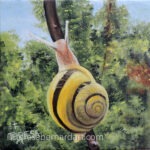
6″ w x 6″ h
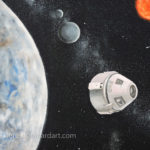
24″ w x 18″ h
Art Glossary Quick Links
Contributing to The Art Dictionary
The sourcebook of art definitions is a work in progress. New terms and definitions are added on a regular basis. If you know of an art term and definition that isn’t already listed in it but you believe it should be, send it to us and we’ll consider adding it. We’ll let you know if we do. Thanks!
Thanks for reading this!
